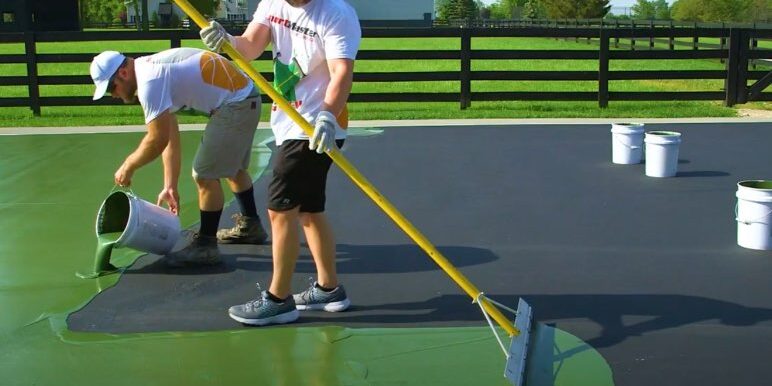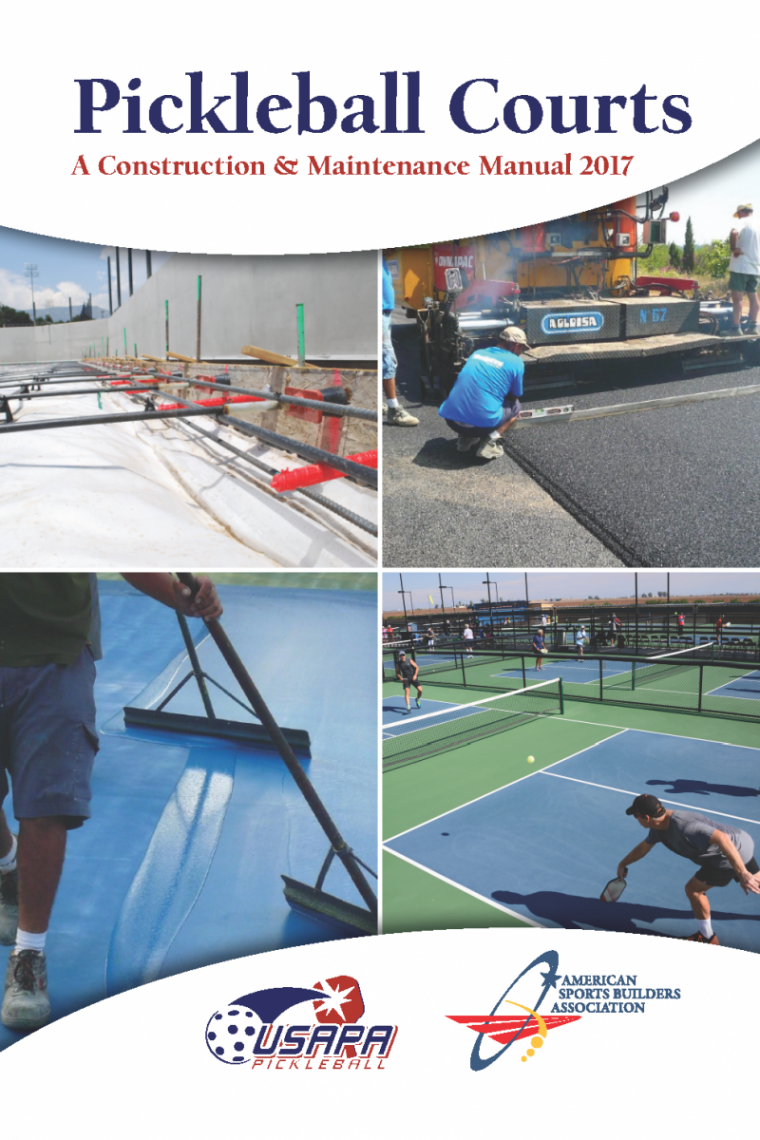A Comprehensive Guide to Creating the Perfect Pickleball Court for All Skill Levels
Creating a pickleball court that accommodates players of differing ability levels demands a multifaceted strategy, encompassing crucial components such as court measurements, surface area materials, and ease of access features. The balance between capability and safety is extremely important, as is the creation of an inviting setting for both participants and spectators. With the appropriate design options, one can cultivate an engaging atmosphere that promotes pleasure and ability development. Pickleball court contractor. The details involved in accomplishing this balance are commonly forgotten. What specific considerations must be prioritized to guarantee a successful execution?

Recognizing Court Capacities
Recognizing the measurements of a pickleball court is important for both developers and players, as these requirements make sure a reasonable and consistent playing experience. A conventional pickleball court determines 20 feet wide by 44 feet long for both songs and doubles play. The court is separated right into two equivalent halves by an internet that stands 36 inches high at the sidelines and 34 inches at the center.
Secret functions of the court consist of the non-volley zone, commonly described as the "cooking area," which prolongs 7 feet from the net on both sides. This area is crucial for managing player motion and volleying, guaranteeing strategic play. Furthermore, the solution locations on each side of the court are necessary, determining 10 feet large and 15 feet deep, made to suit correct serving methods.
Bordering the court, a location of at the very least 10 feet ought to be assigned as the safety zone, permitting players adequate room to move and protect against injuries during play. Following these measurements not only promotes reasonable competitors yet likewise promotes security and satisfaction for all participants, making it vital for any kind of pickleball court design.
Choosing the Right Surface
The option of playing surface area for a pickleball court significantly influences the game's characteristics and gamer experience. Picking the ideal material is important for ensuring player convenience, safety, and performance. Usual surfaces consist of asphalt, concrete, and specialized sports floor covering.
Asphalt is a preferred option due to its cost and durability. It provides a regular playing surface but can be tough on joints over extended play. Concrete, while comparable in durability, offers marginal adaptability, possibly bring about raised influence on players' bodies.
For a more cushioned experience, many centers go with specific sports flooring, such as synthetic surfaces or modular tiles. These materials usually include shock-absorbing properties, lowering the threat of injuries and improving gamer comfort. Such surface areas can enhance ball bounce uniformity, which is important for fair play.
When choosing a surface, take into consideration aspects such as climate, maintenance requirements, and the strength of play. A well-chosen surface area not only boosts gameplay however additionally adds to the long life of the court itself. Inevitably, comprehending the subtleties of different products will help in creating an ideal pickleball environment tailored to numerous skill degrees.
Optimal Court Design
An optimal court design is important for optimizing both gamer performance and viewer enjoyment in pickleball. The dimensions of a standard pickleball court are 20 feet large by 44 feet long for doubles play, preserving a clear border that boosts gameplay. The web, placed at 36 inches high at the sidelines and 34 inches in the center, is essential for keeping the dynamics of the game.
Including designated locations around the court for gamers to move openly is vital. A minimum of 10 feet of clearance on all sides of the court is suggested to prevent collisions and supply area for viewers. Additionally, positioning plays a substantial role; the court ought to ideally be lined up north-south to decrease the impact of sunlight glow on gamers throughout optimal hours.
Efficient spectator placement is similarly crucial. Raised checking out bleachers or locations placed behind the sidelines can improve the experience while making sure safety and security. Visible and clear court markings aid in gameplay, with contrasting shades for borders and non-volley areas that define vital areas for players. Overall, a well-designed court design cultivates an appealing atmosphere for both viewers and players.

Access Factors To Consider
When creating a pickleball court, making certain availability for all gamers, consisting of those with handicaps, is critical. An attentively developed court can promote inclusivity and encourage involvement from people of varying capabilities.

Accessibility courses to the court have to also be carefully planned. Guarantee that pathways resulting in the court are vast enough for wheelchair users and are equipped with ramps where necessary. Signage should be clear and large sufficient to be conveniently reviewed.
Additionally, seating areas should be designed to enable easy accessibility to and from the court. This consists of supplying assigned areas for spectators that might have wheelchair difficulties.
Lastly, make certain that washroom facilities neighboring fulfill availability standards. By find more information thinking about these elements, you can develop a pickleball court that rates and functional for everyone, thereby advertising a diverse and dynamic community of gamers.
Upkeep and Upkeep
Correct maintenance and upkeep of a pickleball court are essential for making certain ideal playing problems and lengthening the life-span of the facility. Normal assessments ought to be performed to determine and address any type my sources of damages or put on, such as splits in the surface area or loose netting. These problems, if left unattended, can adversely impact gameplay and security.
Surface upkeep is crucial; courts need to be cleaned up often to get rid of particles, leaves, or dust that can impact grip. For hard courts, regular stress washing is recommended to keep surface integrity and aesthetic appeals. If your court is constructed from softer materials, such as asphalt, sealing or resurfacing might be necessary to shield versus weather-related wear.
Additionally, web height and stress ought to be examined regularly, as inappropriate setups can modify gameplay. Keeping bordering locations, consisting of fencing and illumination, is similarly crucial for ensuring a pleasurable and risk-free environment.
Final Thought
In conclusion, the style of an ideal pickleball court demands a careful approach that includes proper dimensions, ideal surface area products, and thoughtful layout. By adhering to these standards, the best pickleball court can be created, advertising satisfaction and athletic advancement for players of varying skill degrees.
Creating a pickleball court that provides to gamers of differing skill levels necessitates a multifaceted technique, incorporating crucial elements such as court measurements, surface products, and accessibility functions.Comprehending the dimensions of a pickleball court is critical for both players and designers, as these specs make sure a regular and reasonable playing experience.The selection of see this website playing surface area for a pickleball court dramatically affects the game's characteristics and gamer experience.An ideal court format is important for making best use of both gamer efficiency and spectator satisfaction in pickleball. By sticking to these standards, the perfect pickleball court can be created, advertising satisfaction and sports advancement for players of varying ability degrees.